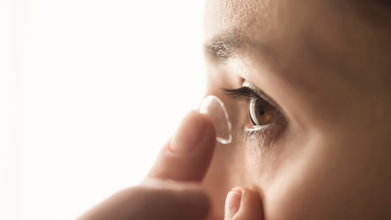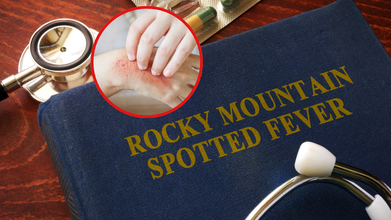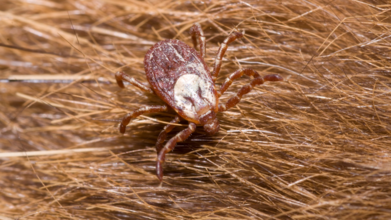- Health Conditions A-Z
- Health & Wellness
- Nutrition
- Fitness
- Health News
- Ayurveda
- Videos
- Medicine A-Z
- Parenting
- Web Stories
Kate Middleton Opens Up About Her 'Really Difficult' Time During Chemotherapy And How Nature Helped Her Heal

Credits: Wikimedia Commons
Kate Middleton or Catherine, Princess of Wales reflected on the aftermath of chemotherapy in her first public appearance since she had unexpectedly withdrawn from Royal Ascot just two weeks ago.
She has called the entire experience "really difficult". On her visit to a wellbeing garden at Colchester Hospital in Essex, England on Wednesday, she told the patients, "You put on a sort of brave face, stoicism through treatment, treatment’s done – then it’s like ‘I can crack on, get back to normal.’ But actually the phase afterwards is really difficult, you’re not necessarily under the clinical team any longer, but you’re not able to function normally at home as you perhaps once used to."
The reason she visited the hospital garden in the Southeast of England was to "celebrate the incredible healing power of nature", noted Kensington Palace.
She also met with patients and hospital staff at the Cancer Wellbeing Centre "to understand how gardens in healthcare setting play a crucial role in promoting good health outcomes, preventing poor health and supporting increased recovery time."
Now 43, Kate herself has pointed out to the importance of nature in her health journey over the last year.
Is There Any Scientific Proof That Nature Could Actually Heal you?
Lisa A Cooper, MD, MPH writes in the 'Letter from the Director' at John Hopkins Medicine that nature does have healing power. She notes that green spaces play a role in cardiovascular health, and also facilitates to interact with other people who are there to enjoy nature. The American Psychological Association (APA) also noted that spending time in nature is linked to both cognitive benefits and improvements in mood, mental health and emotional well-being. The University of Cincinnati also points out that being out in nature can further reduce anxiety, lower blood pressure, enhance immune system function, and boost self esteem and mood.
In fact in a video, which was posted by Kate on X to mark Mental Health Awareness Week in May, she said, "over the past year, nature has been my sanctuary."
Kate Middleton Cancer Timeline
In March, Princess Kate publicly shared her cancer diagnosis and confirmed she had begun chemotherapy. As she focused on her recovery, she stepped away from the public eye, making only a few limited appearances over the summer. By September, she announced she had completed chemotherapy and was "doing what I can to stay cancer-free."
Since then, the Princess of Wales has been gradually re-engaging with her royal responsibilities. While she has increased her public appearances this year, palace insiders say she is carefully managing her return to balance her health with her official duties.
Earlier this summer, Kate made high-profile appearances at key royal events, including the Trooping the Colour parade in London and the Order of the Garter service in Windsor. However, she later withdrew from the Royal Ascot at the last minute, signaling that her return to full-time royal duties is still being handled with care.
Just last week, Kate resumed in-person engagements, joining Prince William in hosting philanthropist Melinda French Gates at Windsor Castle. The meeting, reportedly focused on their shared philanthropic interests, marked one of her first official engagements in recent weeks.
On Wednesday, the Princess made a meaningful visit to Colchester Hospital, where she helped plant several “Catherine’s Rose” plants—a specially bred rose named in her honor by the Royal Horticultural Society. The visit coincided with the hospital receiving a donation of 50 such plants.
The rose holds special significance: proceeds from its commercial sale will go to The Royal Marsden Cancer Charity, supporting cancer patients through treatment and beyond. The funds will help the charity develop a dedicated program focused on improving quality of life for those living with cancer and those who have completed treatment.
Also Read: Why Everyone Is Suddenly Talking About Ivermectin As A Cancer Breakthrough?
Princess Kate has deepened her connection with the Royal Marsden since her diagnosis. In January, Kensington Palace announced she had been named joint patron of The Royal Marsden NHS Foundation Trust, the specialist cancer center in Chelsea, west London, where she received treatment.
Her involvement with the charity and efforts to raise awareness reflect her commitment to supporting others navigating a cancer diagnosis. While her return to public life is cautious and measured, each appearance signals both her resilience and her intention to use her platform for meaningful causes.
As she continues to recover and adjust, the Princess of Wales remains one of the most admired and closely followed members of the royal family—balancing personal healing with her public role.
Contact Lens Health Week 2025: Why Is It Important For Us To Observe A Week For Eye Health?

Credits: Canva
Contact Lens Health Week, observed annually in the third week of August, comes to a close today. This year, it ran from August 18 to 22, serving as an important reminder of how crucial eye health is in our daily lives. While it may seem like a niche health observance, the initiative highlights an issue that affects millions worldwide: the proper care and safe use of contact lenses.
Why Eye Health Cannot Be Overlooked
Vision is one of the most vital senses, yet it is often taken for granted. With modern technology, access to corrective options such as glasses, contact lenses, surgeries, and even transplants has made many believe that eyesight will always be easily restorable. But experts emphasize that carelessness with something as simple as contact lenses can lead to lasting damage. Contact lenses sit directly on the eye, and poor hygiene or overuse can compromise vision. This is exactly why Contact Lens Health Week remains significant.
A Brief History of Vision Correction
The journey of improving human sight stretches back centuries. Records suggest that spectacles first appeared in the late 1200s to early 1300s, with Salvino D’Armate often credited as their inventor. Initially, these crude lenses were luxury items reserved for the wealthy. By the time of the industrial revolution, glasses became widely available and affordable, changing lives across classes.
In the early 1800s, scientist Thomas Young built the first prototype of a contact lens, using wax and water-filled lenses. Over the following century and a half, various improvements led to a more practical design. By the 1940s, significant strides had been made in creating lenses suitable for everyday wear. However, it wasn’t until the introduction of soft lenses in the 1970s that contact lenses truly became mainstream.
The Rise of Contact Lenses, and the Risks
Today, millions of people choose between glasses and contact lenses. Contact lenses offer freedom, convenience, and in many cases, improved aesthetics. Yet, their popularity has also led to widespread misuse. Many users overlook the two key rules: sticking to the replacement schedule and respecting the wear schedule. Even the most advanced lenses should not be worn beyond 30 consecutive days and nights. Ignoring this can reduce oxygen flow to the eyes, cause infections, and in severe cases, lead to vision loss.
Why Contact Lens Health Week Matters
The week serves as a call to action for everyone who relies on contact lenses. It emphasizes the need for proper cleaning, regular replacement, and awareness of risks linked to negligence. Simple practices, like washing hands before touching lenses, never reusing solution, and removing lenses before sleeping, can prevent long-term harm.
Milestones in Contact Lens Development
1508: Leonardo da Vinci illustrates the first concept of contact lenses.
1939: Plastic technology enables the creation of the first plastic contact lenses.
1971: Soft contact lenses gain public approval for comfort.
1987: Disposable soft contact lenses are introduced, making them more accessible.
Serena Williams Opens Up About Her Weight Loss Journey With GLP-1 Medication

Credits: Instagram
Serena Williams is sharing a new chapter in her wellness journey.
The tennis icon, 43, revealed that she turned to a GLP-1 medication to support her weight-loss goals, a decision that helped her shed more than 31 pounds and, in her words, “feel light physically and light mentally.” She told to PEOPLE.
“I feel great,” Williams told PEOPLE. “I feel really good and healthy. I feel light physically and light mentally.”
Postpartum Struggles with Weight
Williams explained that her weight struggles began after giving birth to her first daughter, Alexis Olympia, in 2017. Despite maintaining the disciplined lifestyle of a professional athlete, her body responded differently after pregnancy.
“I never was able to get to the weight I needed to be no matter what I did, no matter how much I trained,” she said. “It was crazy because I'd never been in a place like that in my life where I worked so hard, ate so healthy and could never get down to where I needed to be at.”
READ: US Doctor Claims Weight Loss Drug, GLP-1, Leads To Suicidal Thoughts And Behaviors
The 23-time Grand Slam champion admitted the experience was frustrating because she had always relied on her work ethic. “I had never taken shortcuts in my career and always worked really hard. I know what it takes to be the best,” she told PEOPLE. “So it was very frustrating to do all the same things and never be able to change that number on the scale or the way my body looked.”
After welcoming her second daughter, Adira River, in August 2023, Williams faced a similar challenge. She lost some weight in the first two weeks postpartum, but the progress quickly plateaued. “I never lost another pound,” she recalled.
Turning to GLP-1 for Support
Realizing that even her most disciplined training routine was not giving her the results she wanted, Williams decided to explore new options. That’s when she partnered with Ro, a direct-to-patient healthcare company, to begin GLP-1 treatment.
READ: How Weight Loss Drugs Change Ones Relationship With Food?
What Is GLP-1?
GLP-1 is short for glucagon-like peptide-1 receptor agonists. It is a class of medications that works in the brain to regulate appetite and satiety. Well-known brands include Ozempic and Mounjaro, both of which have generated global discussion about their effectiveness in weight management.
READ: This Naturally Occurring Molecule May Have Ozempic-like Benefits Without The Side Effects
Williams acknowledged that she was initially hesitant. “I did a lot of research on it,” she told PEOPLE. “I was like, ‘Is this a shortcut? What are the benefits? What are not the benefits?’ I really wanted to dive into it before I just did it.”
After six months, when she had stopped breastfeeding Adira, she began weekly injections with her doctor’s guidance. “They were super supportive and it was easy to get the medication,” she said. “I lost over 31 pounds using my GLP-1 and I was really excited about that weight loss.”
Now serving as a celebrity patient ambassador for Ro, Williams emphasizes that the treatment didn’t replace her active lifestyle, it enhanced it.
Feeling Stronger and More Energetic
Williams said her transformation has been about much more than the number on the scale. She’s regained energy, movement, and a sense of ease in her daily life.
“I just can do more. I'm more active. My joints don't hurt as much,” she explained. “I just feel like something as simple as just getting down is a lot easier for me. And I do it a lot faster. I feel like I have a lot of energy and it's great. I just feel pretty good about it.”
Her renewed energy has also inspired her to set new goals, including training for a half marathon.
READ: GLP-1 Drugs Could Be Used To Treat Chronic Kidney Disease
Why Serena Shared Her Story
Throughout her career, Williams has been admired for her transparency, whether on the tennis court or in her personal life. She told PEOPLE that she wanted to share her GLP-1 journey because she knows many people struggle with the same issues, regardless of their dedication to healthy living.
“GLP-1 helped me enhance everything that I was already doing, eating healthy and working out, whether it was as a professional athlete at the top level of tennis or just going to the gym every day,” she said. “So I think that it’s important for everyone to hear my story. And I feel like there's a lot of people that can relate.”
READ: Foods That Mimic Ozempic Results: Natural GLP-1 Boosters That Control Appetite
Balancing Weight Loss with Self-Love
While she is proud of her progress, Williams is equally clear that her confidence and self-worth were never tied to her weight.
READ: Trust Your Instincts, Serena Williams Urges Women To Listen To Their Bodies
“Weight loss should never really change your self image,” she said. “Women often experience judgment about their bodies at any size, and I'm no stranger to that. So I feel like you should love yourself at any size and any look.”
She added that while her heavier weight caused her some physical discomfort, including joint pain, there was nothing inherently wrong with it. “The size I was before, there was nothing wrong with it. It's just not what I wanted to have,” she said. “I just knew that I wanted to be where I personally felt comfortable.”
Teaching Her Daughters About Confidence
Williams, who shares her daughters with husband Alexis Ohanian, said she has made it a priority to talk about body image and positivity at home.
“With me going through what I've went through growing up in public and just having millions of people commenting on my body, it's really important to teach them to be confident at any size, just like I try to be,” she said.
She hopes to pass down a lesson she has learned from looking back at old photographs. “Whether I was smaller or thicker, at that moment I felt so confident. And I looked great, too. So I just think it's so important to love who you are. You'll never get that moment back. You don't want to judge yourself when you're just always showing up as your best.”
Her message is simple: health and confidence go hand in hand. “I always felt comfortable at any size,” she reflected. “But now I feel like my body is thanking me for being at a place where I can move easier, feel lighter, and do more.”
Canada Reports First Tick-Borne Rocky Mountain Spotted Fever, How To Spot The First Symptoms

(Credit - Canva)
Quebec has reported a case of Rocky Mountain spotted fever, a potentially deadly tick-borne disease. Reports suggest that the fever was likely acquired in Ontario or Quebec, as this disease was reported in Ontario earlier this year.
Here is what you need to know about the disease, how fatal it is, risk factors and symptoms you should look out for.
What Is Rocky Mountain Spotted Fever (RMSF)?
According to the Centers of Disease Control and Prevention, RMSF is a serious illness caused by bacteria and spread through the bite of an infected tick. It can be deadly if not treated early.

How To Spot The First Symptom of RMSF?
The first signs of RMSF can be vague and feel like other illnesses, including fever, headache, and muscle pain. The illness can get worse very quickly. A rash is a common symptom, but it often appears 2 to 4 days after the fever starts, which can make it hard to diagnose early. The rash can look like red splotches or tiny dots.
If you get sick after being bitten by a tick or spending time in a wooded or brushy area, you should see a doctor right away.
What Are The Long-Term Effects of RMSF?
RMSF is a serious disease that does not become a long-term, chronic infection. However, a severe case can lead to permanent damage, such as hearing loss, mental disability, or even the loss of limbs due to blood vessel damage.
There is no vaccine for RMSF. The best way to protect yourself is to prevent tick bites on yourself, your pets, and in your yard. Ticks are most active from April to September, but you can be exposed to them year-round.
Because RMSF can be so dangerous, CDC explains that doctors often start treatment with an antibiotic called doxycycline as soon as they suspect the illness, even before lab test results are back. This is because test results can take weeks to return. Doxycycline is an approved treatment for people of all ages and is crucial for preventing severe illness and death. However, please make sure you get yourself checked out before you take any medication.
© 2024 Bennett, Coleman & Company Limited

